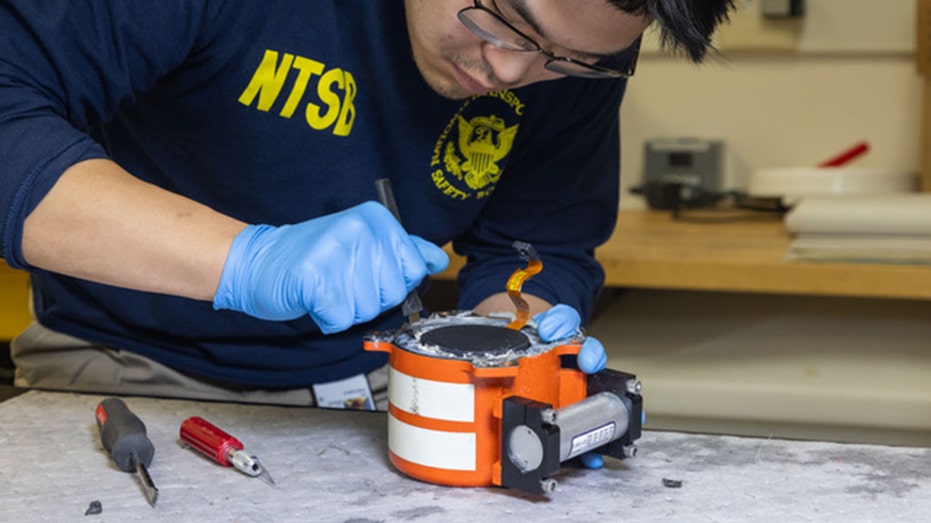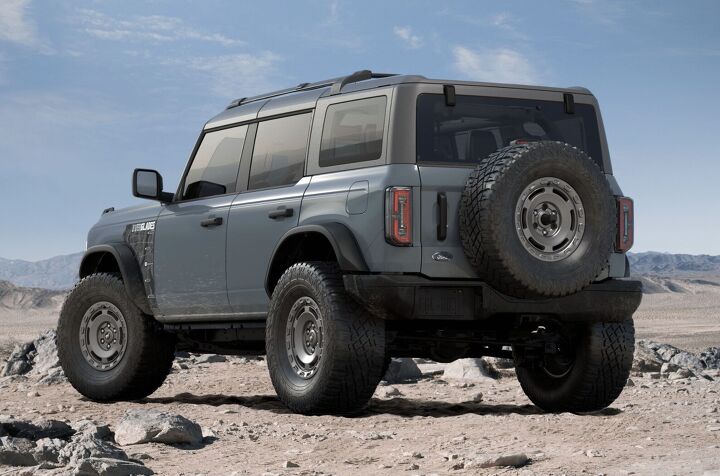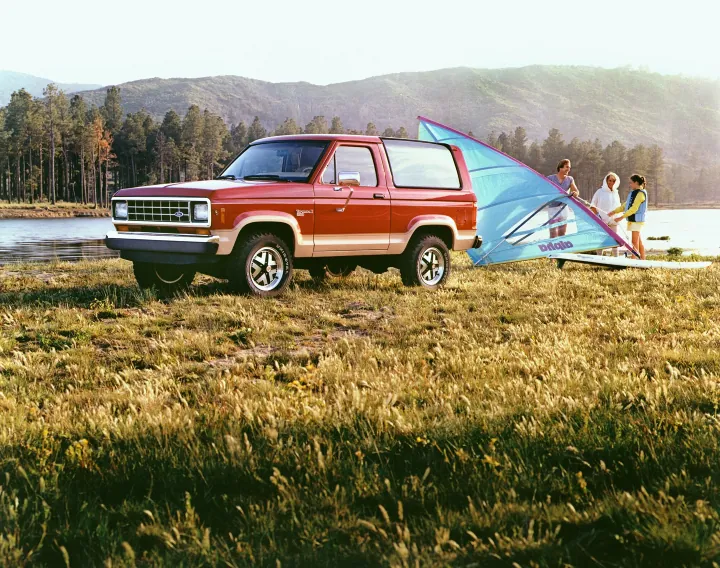10 (More) Iconic Cars That Still Don’t Have Their Own LEGO Set
10 (More) Iconic Cars That Still Don’t Have Their Own LEGO SetThere’s a unique satisfaction in seeing an iconic car brought to life as a LEGO set. These builds capture the essence of automotive legends, blending...
![]()
There’s a unique satisfaction in seeing an iconic car brought to life as a LEGO set. These builds capture the essence of automotive legends, blending intricate design with the hands-on joy of creation. Over the years, LEGO has celebrated some of the world’s most renowned vehicles, turning them into collectible masterpieces for enthusiasts young and old. Yet, many iconic cars remain overlooked, waiting for their moment to be immortalized in brick form.
It’s a curious omission when you think about it—cars that defined generations, shaped automotive history, or simply made enthusiasts swoon, still absent from LEGO’s lineup. In our earlier article, we highlighted 10 of these dream cars that have yet to make the leap from full-size to LEGO-sized. And now, the saga continues. From cult classics to cutting-edge marvels, here are 10 more iconic vehicles that deserve a spot on LEGO’s drawing board—and on your shelf.
01. Lamborghini Urus
![]()
The Lamborghini Urus took the automotive world by surprise, not because Lamborghini hadn’t dabbled in SUVs before (remember the boxy LM002?), but because this time they nailed the concept of a super-SUV that was as much at home on the racetrack as it was on grocery runs. Its razor-sharp lines, aggressive stance, and 641-horsepower twin-turbo V8 didn’t simply signal Lamborghini’s entry into the luxury SUV market—it practically shook it up. In one fell swoop, the Urus became the go-to option for those who wanted Lamborghini’s flair and ferocity paired with the practicality of a family hauler.
A LEGO Urus set would highlight that audacious duality: capturing the sleek angles and scowling front fascia while maintaining enough room to hint at interior space for multiple minifigures. It’d be fascinating to see how the signature Y-shaped headlights and hexagonal wheel arches translate into studs and slopes, combining supercar aesthetics with SUV utility in a realm where even the wildest curves are conquered by little plastic bricks. This is the Lamborghini that refuses to be categorized—and in LEGO form, it could usher in a fresh perspective on how performance meets practicality, block by block.
02. Audi TT (1998)
![]()
The original Audi TT from 1998 still stands as one of the most striking examples of minimalist automotive design, pulling in clean lines and geometric forms reminiscent of Bauhaus principles. It was a shift in approach for a car brand known for its technical prowess—a statement piece that quickly became an icon of late-90s style. The TT’s compact silhouette and timeless circular cues—from the fuel cap to the wheel arches—made it an instant modern classic, turning heads and inspiring countless imitators across the industry.
A LEGO TT would revel in those curvy lines and thoughtful proportions that set the car apart from the blocky, angular norms of the era. Translating the TT’s smooth, dome-like roof and perfectly rounded wheel arches into little plastic elements would be an intriguing exercise in shape replication. The minimalist interior—highlighted by purposeful vents and a simple dashboard layout—could be conveyed with carefully chosen bricks, paying tribute to how the TT seamlessly combined form and function. It would be a refreshing reminder that sometimes less really is more, even in a LEGO set.
03. BMW i8
![]()
The BMW i8 always felt like a sci-fi concept that somehow escaped into the real world. Even after seeing it on city streets, there’s something extraterrestrial about those flowing lines, scissor doors, and neon-blue accents that highlight its electric DNA. It’s as if BMW said, “Let’s show everyone the future,” and then actually built it. Unlike most sports cars roaring their way through highways, the i8 offers a kind of hushed, thoughtful power—both literally and metaphorically—by pairing a turbocharged engine with an electric motor.
A LEGO i8 would capture that delicate dance between stealthy aggression and eco-conscious design, letting builders piece together its aerodynamic curves and puzzle-like door hinges. While a typical supercar set might revolve around V12 lumps and loud exhausts, an i8 kit could celebrate the quiet genius under its hood—the union of performance and sustainability. And with LEGO’s knack for engineering surprises into their models, imagining the i8’s see-through panels and subtle LED strip illusions in brick form is enough to spark any enthusiast’s imagination.
04. Aston Martin Vantage
![]()
The Aston Martin Vantage convertible—often referred to as the Vantage Roadster or Volante—channels the brand’s British racing heritage into a sleek, roofless silhouette that turns even casual Sunday drives into grand tours. Underneath its refined exterior lies a spirit of athleticism, evident in the pronounced haunches that wrap around the rear wheels and that characteristic low nose pointing forward like a poised cat. With a powertrain that roars in classic Aston Martin style, this car seamlessly mixes sophistication and adrenaline, making it a favorite among those who appreciate both creature comforts and raw driving dynamics in one open-top package.
Capturing the Vantage’s essence in a LEGO set would be a playful yet challenging endeavor: think carefully contoured panels meeting seamlessly in all the right places, and a convertible roof that flips back to reveal a surprisingly spacious cockpit (for minifigs, of course). Recreating the hallmark “hunter” grille and those muscular rear haunches would test any builder’s ingenuity, calling for creative use of wedges, slopes, and hinge pieces to mirror the Roadster’s sophisticated shape. The result would be a testament to the Vantage’s balance of style and ferocity—wrapped up in an undeniably British sense of refinement.
05. Tesla Cybertruck
![]()
When the Tesla Cybertruck debuted, it felt like the day sci-fi finally became reality. From its angular, stainless-steel exoskeleton to its nearly apocalyptic stage reveal, every aspect of the Cybertruck screamed defiance against automotive norms. Some called it a design disaster, others hailed it as the future on four wheels—either way, it was all anyone could talk about. Given that buzz, you’d think LEGO would’ve hopped right on board with an official set, but the Cybertruck remains M.I.A. (officially, at least) in the brick universe.
A LEGO version of this vehicle would reinterpret the car’s edgy silhouette perfectly. The steel trapezoidal panels and dramatically sloping roof lines aren’t just for looks; they’d transform into fascinating building challenges in LEGO form. And while the real Cybertruck’s cold, industrial vibe might be divisive in metal, there’s something undeniably enticing about replicating those hard edges with precise little plastic bricks. It would be the perfect homage to Tesla’s audacity: weird, innovative, and unapologetically futuristic.
06. Tesla Roadster
![]()
The second-generation Tesla Roadster, first unveiled in 2017 (with an official announcement in 2018), promised to be the ultimate electric supercar—staking claims of 0–60 mph in a mere 1.9 seconds, a top speed beyond 250 mph, and a range of 620 miles. Yet, despite the fanfare, the Roadster still hasn’t begun shipping, overshadowed by Elon Musk’s recent pivot toward hard right-wing politics—moves that have cost him a good deal of public favor. Even so, the car’s design remains striking: a sleek silhouette, sweeping glass canopy, and muscular haunches that make it look every bit like the supercar Tesla always teased it would be.
As a LEGO set, capturing that ultra-aerodynamic shape would be a thrilling challenge, with subtle curves morphing into defined, almost futuristic edges. The low-slung stance and pronounced front splitter could be replicated with carefully layered plates, while transparent pieces could simulate the massive panoramic windshield. For a car that’s all about breaking conventions—from performance to aesthetics—a brick-built Roadster would push boundaries too, challenging fans to combine sculptural elements with functional details that mirror the promise of Tesla’s elusive flagship EV.
07. Lucid Air
![]()
The Lucid Air arrived on the scene not as a tentative newcomer, but as a polished statement of what electric luxury could become. With its glass canopy that stretches overhead and a design language that whispers elegance more than it shouts, the Air nudged its way into conversations normally reserved for the likes of Mercedes or Tesla. Touting a range that can exceed 500 miles on a single charge, it wove hyper-efficiency into a cabin that’s all about spaciousness and understated opulence—proving that electric cars needn’t be all about raw minimalism or jet-fighter aesthetics.
Reimagining the Air as a LEGO set would mean capturing its sensuous sweeps and subtle aerodynamic contours, rather than relying on flashy flourishes or oversized spoilers. The challenge would be to reflect that “floating” roofline with precisely matched slopes and seamless transparent elements—giving the model a sense of airy openness. And then there’s the interior, which, if done right, would reflect the Air’s blend of high-tech sophistication and indulgent comfort. In plastic brick form, the Lucid Air could serve as a delicate balance of form and function, much like the real car it pays tribute to.
08. Alfa Romeo 8C Spider
![]()
There’s something unapologetically romantic about the Alfa Romeo 8C Spider. From the moment you see its sweeping fenders and that unmistakable V-shaped grille, you realize this car is entirely about seducing the senses. Every curve flows into the next with almost organic ease, like a living sculpture designed to make onlookers swoon. Underneath the bonnet, a Ferrari-derived V8 hums with an operatic growl that perfectly complements its alluring exterior. And while modern roadsters often chase the latest tech trend, the 8C Spider prioritizes passion above all else, bridging classic Italian design with contemporary performance.
A LEGO rendition would have the tricky task of translating that emotional presence into tiny plastic bricks. You’d need precisely angled slopes to capture the 8C’s fluid form, clever engineering to mimic the convertible top, and perhaps a hidden mechanism to hint at that glorious engine note. It’d go beyond just aesthetics, tapping into the soul that Alfa Romeo poured into this limited-production masterpiece. Because the 8C Spider is ultimately a love letter to Italy’s timeless ability to make cars that stir hearts and quicken pulses.
09. Tesla Model Y
![]()
The Tesla Model Y might not be the wildest or fastest EV out there, but it’s arguably the brand’s most essential workhorse—quietly (and sometimes not-so-quietly) taking electric cars from novelty to necessity. It bridges that sweet spot between sedan agility and SUV utility, making it the Tesla for families, road trips, and everyday commutes. While the sports car silhouettes tend to hog the spotlight, the Model Y has been rolling off production lines and onto city streets in numbers that are hard to ignore, proving that electrification isn’t just for speedsters and tech aficionados. As long as you can sidestep its CEO’s political shenanigans, I guess.
A LEGO Model Y would celebrate the unassuming brilliance of a design that’s less about flash and more about function. Sure, the falcon-winged doors of the Model X or the wedge-shaped audacity of the Cybertruck might grab headlines, but there’s a beauty in the Model Y’s subdued curves and panoramic glass roof that deserves the brick treatment. Recreating its simplified interior with a single central display and minimal physical controls would be a fun twist for a LEGO build, steering away from the usual dials and vents. It’s the EV that made Tesla feel almost… normal, and that shift to mainstream acceptance is exactly what would make a LEGO set of the Model Y so fascinating.
Jaguar Type 00
![]()
The Jaguar Type 00 Concept arrived with a thunderclap of fanfare—and no small dose of skepticism. Launched as the showpiece of Jaguar’s aggressive rebrand, the Type 00 was intended to propel the storied British marque into a daring new era of electrification and design language. Yet, the unveiling stirred controversy among purists who believed Jaguar’s heritage was being overshadowed by an ultra-modern aesthetic more akin to a spaceship than a classic grand tourer. The car’s sharp, almost skeletal headlights and the dramatically sculpted rear put forth a radical vision that split fans down the middle, sparking debate over whether this was the inevitable next step or a betrayal of Jaguar’s hallowed legacy. Does the Type 00 fit among this hallowed list of iconic cars? Probably not, but it surely will go down in history as Jaguar’s most prominent car in recent times.
A LEGO adaptation of the Type 00 would reflect that design ethos by capturing its razor-sharp lines, ultra-minimalist headlights, and distinctive silhouette. The challenge would lie in recreating its near-monolithic exterior using angular bricks and transparent elements for the coupe-like glasshouse. Inside, one could imagine a meticulously assembled cockpit that speaks to the concept’s tech-focused cabin—complete with a driver-oriented console and futuristic displays. In LEGO form, this Jag wouldn’t just be a nod to its heritage; it would be a snapshot of the controversial new direction the company is steering toward, for better or worse.
The post 10 (More) Iconic Cars That Still Don’t Have Their Own LEGO Set first appeared on Yanko Design.












































![United Lounge Hack: Flyers Are Cooking Up Secret Breakfast Sandwiches—Would You Try It? [Roundup]](https://viewfromthewing.com/wp-content/uploads/2025/01/united-mcmuffin.webp?#)
































